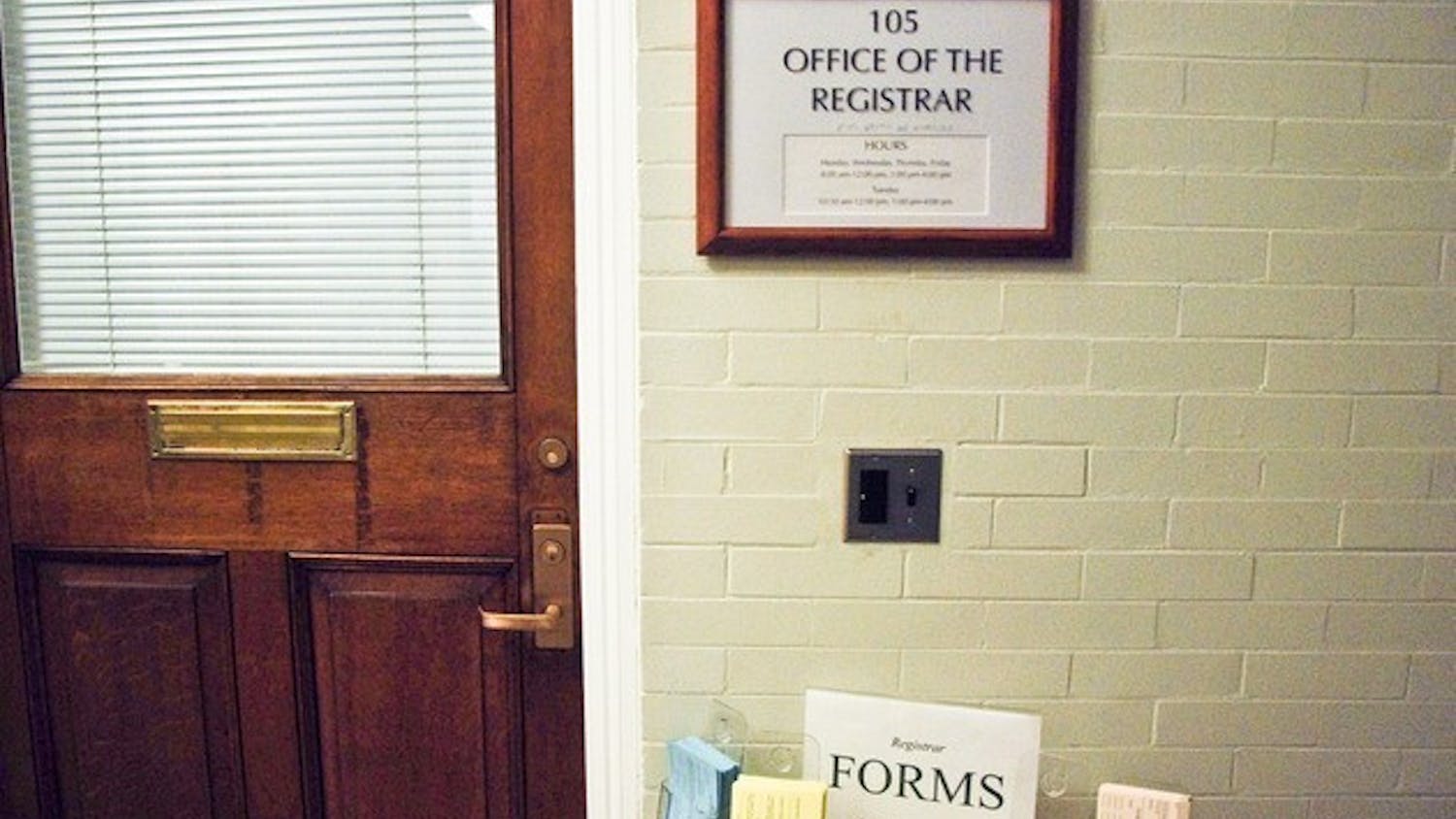A staple of the Dartmouth student experience during warmer months, the Hanover farmers’ market used to liven up Wednesday afternoons, transforming the Green into a hub to congregate, converse and of course, consume. I remember the festive feeling I would get upon hearing guitar strings and seeing white tents (which undoubtedly signal something different nowadays).
A friend in Hanover told me he hadn’t seen the farmers’ market since arriving on campus, and after a quick call with Tracy Hutchins from the Upper Valley Business Alliance, I learned that the Hanover farmers’ market had been discontinued. While this decision was due to financial and staffing reasons rather than COVID-19, I started wondering how the other farmers’ markets in the area were faring amid the pandemic. Turns out, managers and vendors across the Upper Valley have had to reinvent the market and more broadly, the way that local food and other products get to consumers.
Lebanon farmers’ market coordinator Jessica Giordani said it was a “huge decision” to run the market this year, which is usually held from mid-May until the end of September, on Thursdays from 4 to 7 p.m. in Colburn Park. She described the market under normal circumstances as a “robust event” with around 50 vendors, live music and the occasional food truck, which draws about 2,000 people from all over the Upper Valley on an average night.
Giordani recalled the uncertainty of being around two months away from opening day when businesses started to shut down. However, in a March 26 emergency order, New Hampshire Gov. Chris Sununu designated farmers’ markets as essential services.
“We went from not knowing whether we would be able to operate, to having the message that we were expected to operate,” Giordani said. “We had a lot of planning to do on short notice.”
The Lebanon farmers’ market made several changes to its layout when it opened in May. There were 10-foot spaces between every tent, 30-foot-wide walking paths, closed-off access points, hand sanitizer stations at the one entrance and exit, a mask requirement and capacity limit. Other changes included extended market hours and a tent designated for order-ahead pickup.
According to Giordani, this year’s market usually saw between 20 and 30 vendors and between 500 to 800 customers over the course of an afternoon. She thinks the changes have been largely successful in providing access to fresh food in an outdoor setting, as well as providing a “taste of normalcy” beneficial to the community’s well-being.
“This is an emotional service to the community as much as it’s about supporting local food and agriculture,” Giordani said.
The president of the Newport farmers’ market, Richard Scheuer, detailed some extra difficulties in opening. The town of Newport prohibited the market from starting up until after stay-at-home orders expired in mid-June, so opening day was delayed for one month. Additionally, some big vegetable vendors either did not come to market at all or had to drop out early due to diminished sales. Because of this, he said customer traffic was “way down.”
“If you don’t have the vegetable vendors,” Scheuer said, “you really don’t have a draw for people to come.”
As a broader pattern, Scheuer stressed that farmers’ markets are changing: More local products can be found in grocery stores, it’s more difficult to make sales at a farmers’ market and in general, “people just aren’t getting into farming anymore.”
Across the river, the Norwich farmers’ market also felt the effects of the pandemic. The winter market had to close in February due to Vermont Gov. Phil Scott’s order that disallowed indoor markets, according to market manager Steve Hoffman. The summer market was postponed for one week in May, but after that it opened during its regular hours on Saturdays from 9 a.m. to 1 p.m.
Hoffman said that the state of Vermont initially required vendors to be spaced 12 feet apart, which caused the market to relocate some vendors to a nearby parking lot. Ultimately, the market could not accommodate as many vendors as usual, but a number of vendors also chose not to sell at the market for a variety of reasons.
“Some [vendors] didn’t have the free time anymore,” Hoffman said. “Some elderly vendors didn’t want to come out of an abundance of caution about getting sick. Some people had products like jewelry — it’s really hard to sell in an environment where people can’t come to your booth and touch your product and try it on.”
In addition to the spacing requirement, the state regulations prohibited live music and on-site consumption of food. Being a musician himself, Hoffman especially lamented the loss of live music at the Norwich farmers’ market. In previous years he would hire up to 26 different groups to perform, but with all the restrictions this year — now, musicians are allowed but must be barricaded off — he decided to play recorded music instead, which he described as “not the same.”
Hoffman has observed that while the number of customers frequenting the market has declined, the number of sales per vendor has not — an observation echoed by many of the market managers I talked to. Additionally, like other markets, the Norwich market’s budget has been supplemented with a combination of loans from the Paycheck Protection Program, grants from the state and money from community organizations.
For the near future, Hoffman mentioned that the summer market will be open until Oct. 31. Afterward, he plans to hold one more outdoor market in November, and then switch to a once-a-month preorder and pickup model.
The Hartland farmers’ market has already transitioned to an online ordering platform with curbside pickup. In the initial stages of the pandemic, when there was little guidance from the state of Vermont, Hartland market manager Brian Stroffolino decided to build a website for online ordering and has stuck with it over the entire season.
Because the Hartland farmers’ market is smaller than other markets in the area — averaging 12 vendors and relying on volunteer help — it had a limited ability to update its infrastructure in order to manage customer traffic. However, Stroffolino said that the market’s online platform has proven quite useful. Customers are able to order from multiple vendors at once, and for vendors, it takes the guesswork out of deciding how much to harvest and prepare for the curbside distribution each week.
Stroffolino described the online ordering model as “smooth sailing” overall, but he misses the “social environment” that the open-air market provided and would like to offer both options in the future. Meanwhile, recent excitement for him has centered around the Hartland Community Oven, a recently completed project that was spearheaded by the market.
“The vision [for next year] is, you’ve got the live music, you’ve got wood-fired pizzas, you’ve got our open-air market with the kids’ activities, making for an enjoyable, healthy, fun, family-oriented environment,” Stroffolino said.
On a less positive note, president of the Woodstock farmers’ market Patrick Crowl expressed how difficult it is to plan for the future. He wonders whether there is going to be a turkey shortage for Thanksgiving or a refrigeration shortage in the store when there are bulkier curbside pickup orders.
“Everybody in our style of business is shaking in their boots,” Crowl said. “I’ve been in business for 30 years. I’ve never seen a time where you have no idea three weeks down the road what life is going to look like, and it’s very unsettling.”
The Woodstock market’s four-season retail store had to be retrofitted with wider aisles, a self-serve prepared foods case and plenty of plexiglass. Because only 30 people are allowed in the store at a time, and because store hours have been cut almost in half, Crowl said that customer visits have decreased by 50%.
Staffing concerns also abound. Crowl thinks that people no longer want to work in public in the service industry for $13 to $15 an hour. While he hopes to reopen their second Waterbury location, he said that decision also “boils down to the staff.”
Nancy LaRowe, the Food & Farm and Local First coordinator at Vital Communities, an Upper Valley nonprofit, said that their organization has been working to provide information, resources and financial support to local farms and farmers’ markets. She noted that vendors have been pleasantly surprised that sales have kept up with previous years, but added that those sales came at extra costs and with extra labor.
Because of these costs, LaRowe said that “this incredible interest in local food — which is wonderful — might not translate into a boon for farms.”
LaRowe has been happy to see the greater recognition and appreciation of local agriculture. She hopes that community members will continue to support local farms past the pandemic.
“When we were in crisis, our local farmers were who we went to,” she said. “But this is not going to be the last emergency by a long shot.”
Correction appended (Sept. 30, 2020): A previous version of this article incorrectly suggested that Hartland, Vermont was in New Hampshire. The article has been updated to reflect the correct state.




